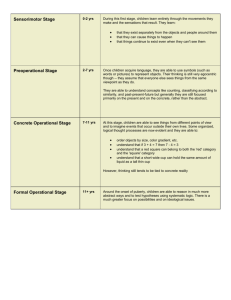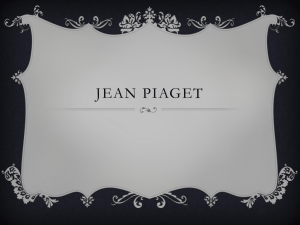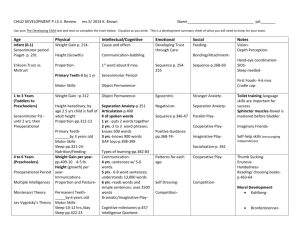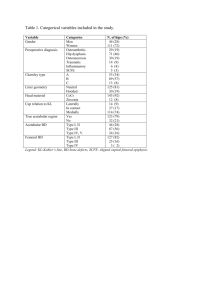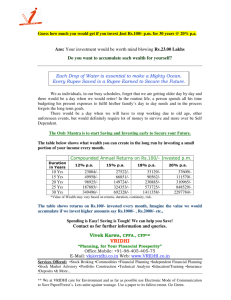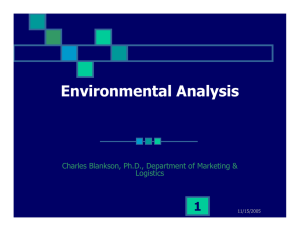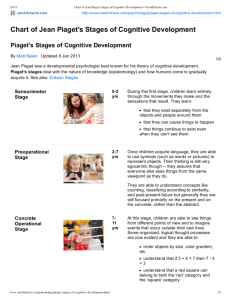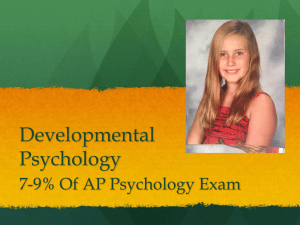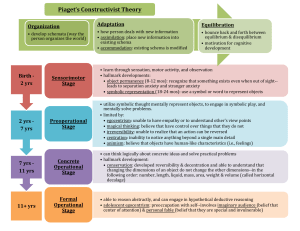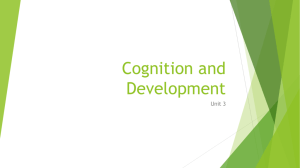Piaget
advertisement
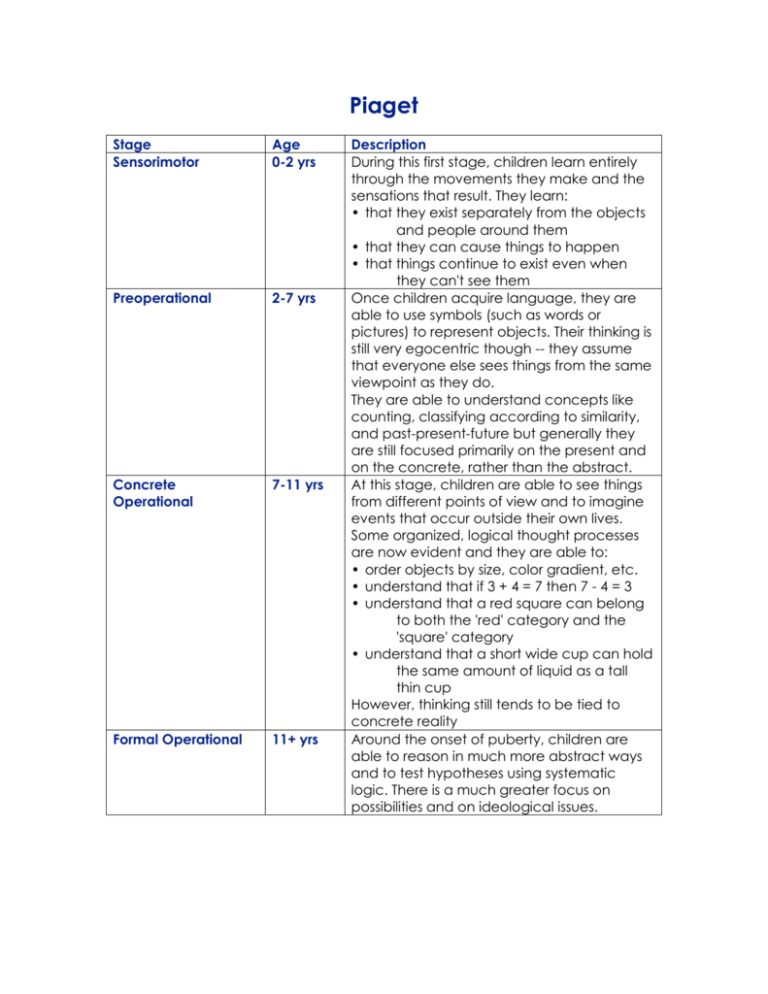
Piaget Stage Sensorimotor Age 0-2 yrs Preoperational 2-7 yrs Concrete Operational 7-11 yrs Formal Operational 11+ yrs Description During this first stage, children learn entirely through the movements they make and the sensations that result. They learn: • that they exist separately from the objects and people around them • that they can cause things to happen • that things continue to exist even when they can't see them Once children acquire language, they are able to use symbols (such as words or pictures) to represent objects. Their thinking is still very egocentric though -- they assume that everyone else sees things from the same viewpoint as they do. They are able to understand concepts like counting, classifying according to similarity, and past-present-future but generally they are still focused primarily on the present and on the concrete, rather than the abstract. At this stage, children are able to see things from different points of view and to imagine events that occur outside their own lives. Some organized, logical thought processes are now evident and they are able to: • order objects by size, color gradient, etc. • understand that if 3 + 4 = 7 then 7 - 4 = 3 • understand that a red square can belong to both the 'red' category and the 'square' category • understand that a short wide cup can hold the same amount of liquid as a tall thin cup However, thinking still tends to be tied to concrete reality Around the onset of puberty, children are able to reason in much more abstract ways and to test hypotheses using systematic logic. There is a much greater focus on possibilities and on ideological issues.
